QuickBooks ® Request for Payment Invoicing
The Best Solution for Payment Processing in QuickBooks®
Today Payments is an Authorized Reseller of Intuit offering a highly robust app that supports both QuickBooks’ desktop and online customers, provide merchants with the tools they need so they can focus more time on their customers and businesses, and less time on data entry.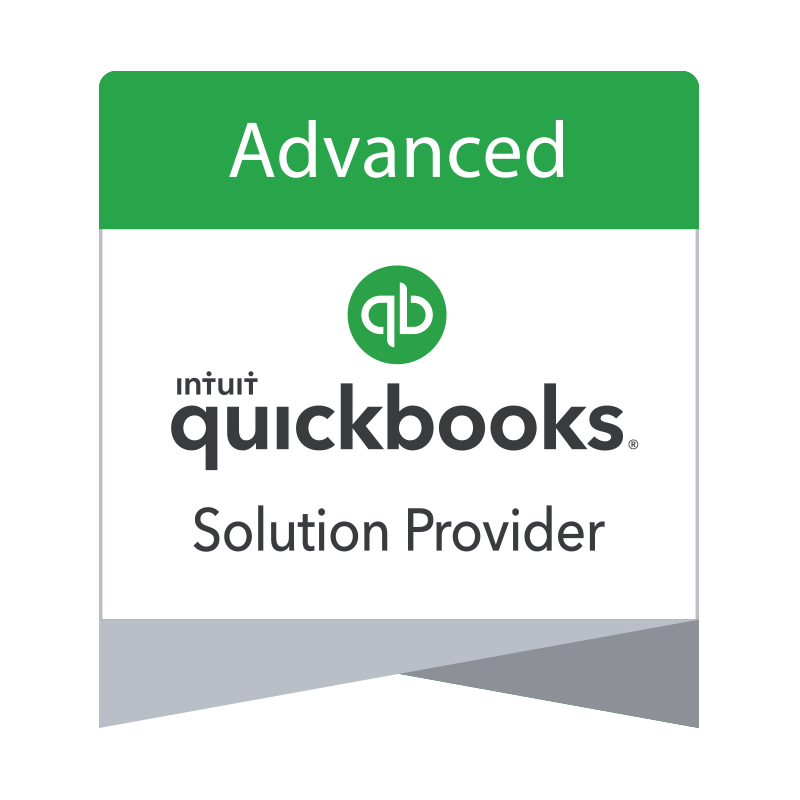
"Our Integrated payment solutions can save a typical small business owner more than 180 hours each year"
See
the features
QuickBooks® ACH, Cards, FedNow and Real-Time Payments
- Payment processing for all QuickBooks desktop, Pro, Premier, Enterprise and also QBO QuickBooks Online Our software is designed for simplicity and ease-of-use.
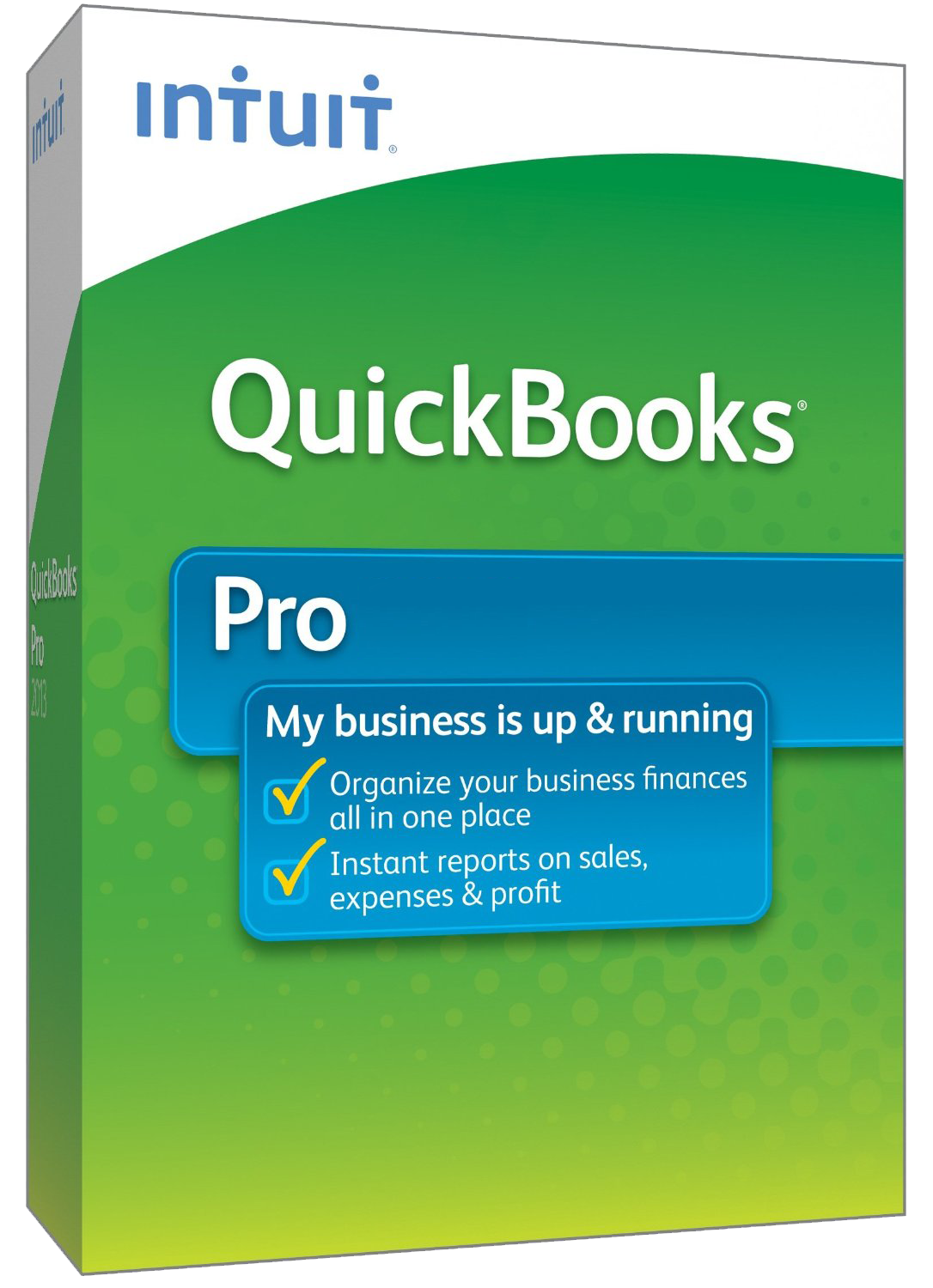
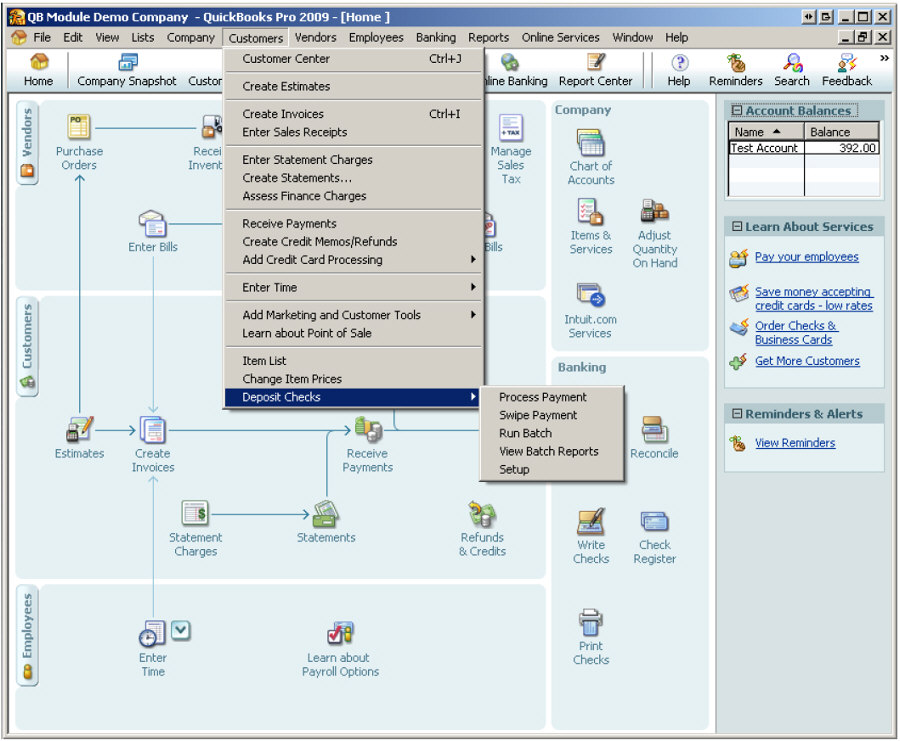
- ~ Automate Account Receivable Collection
- ~ Automate Account Payable Payments
- ~ One-time and Recurring Debits / Credits
Secure QB Plugin payment processing through QuickBooks ® specializes in the origination of moving money electronically.
Ask about our special:
Request for Payments
To send FedNow and Real-Time Payments (RTP) Request for Payments (RfP) from QuickBooks Online (QBO) to your business bank, you will need to follow a structured process that involves:
- Exporting payment request data from QBO.
- Formatting the data in the appropriate ISO 20022 (Pain.013), CSV, or JSON file format.
- Submitting the formatted RfP file to your bank using either a file upload portal or an API that supports FedNow or RTP.
Here's how you can achieve this:
Step-by-Step Guide to Sending FedNow and RTP RfP from QBO to Your Bank
1. Configure QuickBooks Online (QBO)
- Invoices: Ensure that the invoices or payment requests you want to send are recorded in QBO, with details about the payer, payment amounts, invoice numbers, and due dates.
- Customer Details: Make sure that the necessary information for your customers (debtors) is up to date, including their account details if required for the RfP.
2. Install SecureQBPlugin
To facilitate the export of RfP data from QBO, install and configure the SecureQBPlugin, which helps you extract payment data from QuickBooks Online in the desired format (such as ISO 20022 XML, CSV, or JSON).
- Download and install the SecureQBPlugin.
- Connect it to your QuickBooks Online account by logging in and authorizing the plugin to access your QBO data.
3. Export Payment Data from QBO
Using SecureQBPlugin, you can export the necessary payment data (such as customer name, invoice number, payment amounts, etc.) in a structured file format that can be used for RTP or FedNow requests. Here are the possible file formats and how to export them:
ISO 20022 (Pain.013) XML Export
Export the data as an ISO 20022-compliant XML file (Pain.013 format) for RfP. The plugin will map QBO data (e.g., invoices) to the appropriate fields in the ISO 20022 standard.
Steps to Export in ISO 20022 Format:
- Open SecureQBPlugin and select the invoices or payment requests you want to include in the batch.
- Choose the ISO 20022 Pain.013 file format.
- Map the fields: SecureQBPlugin will map customer details, payment amounts, and remittance information from QBO to the correct XML structure.
- Export the file and save it locally.
Sample ISO 20022 (Pain.013) XML File:
xml
<Document>
<CstmrCdtTrfInitn>
<GrpHdr>
<MsgId>PAYMENTBATCH001</MsgId>
<CreDtTm>2024-09-15T12:00:00</CreDtTm>
<NbOfTxs>2</NbOfTxs>
<CtrlSum>3500.00</CtrlSum>
</GrpHdr>
<!-- First Payment Request -->
<PmtInf>
<PmtInfId>PmtInf001</PmtInfId>
<PmtMtd>TRF</PmtMtd>
<ReqdExctnDt>2024-09-15</ReqdExctnDt>
<Dbtr>
<Nm>Customer One</Nm>
</Dbtr>
<DbtrAcct>
<Id>
<IBAN>US1234567890</IBAN>
</Id>
</DbtrAcct>
<Cdtr>
<Nm>Your Business Name</Nm>
</Cdtr>
<CdtrAcct>
<Id>
<IBAN>US9876543210</IBAN>
</Id>
</CdtrAcct>
<Amt>
<InstdAmt Ccy="USD">1500.00</InstdAmt>
</Amt>
<RmtInf>
<Ustrd>Invoice #INV001</Ustrd>
</RmtInf>
</PmtInf>
<!-- Second Payment Request -->
<PmtInf>
<PmtInfId>PmtInf002</PmtInfId>
<PmtMtd>TRF</PmtMtd>
<ReqdExctnDt>2024-09-15</ReqdExctnDt>
<Dbtr>
<Nm>Customer Two</Nm>
</Dbtr>
<DbtrAcct>
<Id>
<IBAN>US2234567890</IBAN>
</Id>
</DbtrAcct>
<Cdtr>
<Nm>Your Business Name</Nm>
</Cdtr>
<CdtrAcct>
<Id>
<IBAN>US9876543210</IBAN>
</Id>
</CdtrAcct>
<Amt>
<InstdAmt Ccy="USD">2000.00</InstdAmt>
</Amt>
<RmtInf>
<Ustrd>Invoice #INV002</Ustrd>
</RmtInf>
</PmtInf>
</CstmrCdtTrfInitn>
</Document>
CSV Export
Alternatively, you can export payment requests in CSV format. The CSV file will contain all the essential payment details such as customer name, IBAN, amount, and invoice numbers.
Steps to Export as CSV:
- Select the invoices in QBO that need to be sent as payment requests.
- Export them using SecureQBPlugin, ensuring that the format is structured to match the fields required by your bank.
Sample CSV File:
csv
Copy code
MsgId,DebtorName,DebtorIBAN,CreditorName,CreditorIBAN,Amount,Currency,InvoiceNumber
PAYMENTBATCH001,Customer One,US1234567890,Your Business Name,US9876543210,1500.00,USD,INV001
PAYMENTBATCH001,Customer Two,US2234567890,Your Business Name,US9876543210,2000.00,USD,INV002
JSON Export
If your bank supports JSON files, you can export payment requests in this format, which is commonly used for API submissions.
Sample JSON File:
json
{
"BatchRequest": {
"MsgId": "PAYMENTBATCH001",
"Transactions": [
{
"Debtor": {
"Name": "Customer One",
"IBAN": "US1234567890"
},
"Creditor": {
"Name": "Your Business Name",
"IBAN": "US9876543210"
},
"Amount": {
"Currency": "USD",
"Value": 1500.00
},
"RemittanceInformation": "Invoice #INV001"
},
{
"Debtor": {
"Name": "Customer Two",
"IBAN": "US2234567890"
},
"Creditor": {
"Name": "Your Business Name",
"IBAN": "US9876543210"
},
"Amount": {
"Currency": "USD",
"Value": 2000.00"
},
"RemittanceInformation": "Invoice #INV002"
}
]
}
}
4. Submit the RfP File to Your Business Bank
Once you have exported the file in your preferred format (ISO 20022 XML, CSV, or JSON), you need to submit it to your business bank. The steps to submit vary depending on the bank’s system.
File Upload via Bank Portal:
- Log into your bank's FedNow or RTP portal (many banks that support real-time payments provide a secure online platform for file submissions).
- Navigate to the file upload section.
- Upload the ISO 20022 (Pain.013), CSV, or JSON file generated from SecureQBPlugin.
- Review the file and ensure that all payment details are correct.
- Submit the file for processing.
API Submission:
If your bank provides an API for RTP or FedNow submissions, you can automate the process by sending the RfP file directly via API.
- Set up API credentials provided by your bank.
- Use a tool like Postman or integrate the API into your accounting system to submit the RfP file programmatically.
- Send the exported file (in JSON or XML) to the bank’s real-time payments API endpoint.
5. Monitor the Status of Payments
After submitting the batch Request for Payments file:
- Track the payment status using your bank’s portal or API.
- The system should notify you when payers (customers) accept the payment request and complete the transaction.
- You will receive confirmation or payment rejections, which can be imported back into QBO for reconciliation using SecureQBPlugin.
6. Reconcile Payments in QBO
After your bank processes the payment requests, you should reconcile the completed payments in QuickBooks Online. You can use SecureQBPlugin to automate the reconciliation process by importing confirmation files from your bank.
Final Thoughts
By using SecureQBPlugin with QuickBooks Online, you can efficiently
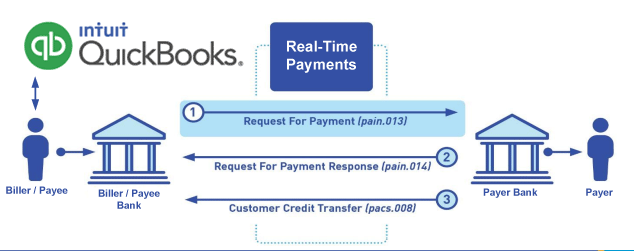
Call us, the .csv and or .xml Request for Payment (RfP) file you need while on your 1st phone call! We guarantee our reports work to your Bank and Credit Union. We were years ahead of competitors recognizing the benefits of RequestForPayment.com. We are not a Bank. Our function as a role as an "Accounting System" in Open Banking with Real-Time Payments to work with Billers to create the Request for Payment to upload the Biller's Bank online platform. U.S. Companies need help to learn the RfP message delivering their bank. Today Payments' ISO 20022 Payment Initiation (PAIN .013) show how to implement Create Real-Time Payments Request for Payment File up front delivering message from the Creditor (Payee) to it's bank. Most banks (FIs) will deliver the message Import and Batch files for their company depositors for both FedNow and Real-Time Payments (RtP). Once uploaded correctly, the Creditor's (Payee's) bank continuing through a "Payment Hub", will be the RtP Hub will be The Clearing House, with messaging to the Debtor's (Payer's) bank.
Our in-house QuickBooks payments experts are standing ready to help you make an informed decision to move your company's payment processing forward.
Pricing with our Request For Payment Professionals
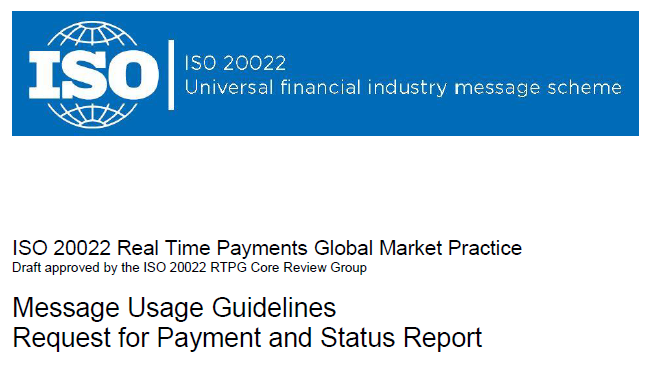
1) Free ISO 20022 Request for Payment File Formats, for FedNow and Real-Time Payments (The Clearing House) .pdf for you manually create "Mandatory" (Mandatory data for completed file) fields, start at page 4, with "yellow" highlighting. $0.0 + No Support
2) We create .csv or .xml formatting using your Bank or Credit Union. Create Multiple Templates. Payer/Customer Routing Transit and Deposit Account Number may be required to import with your bank. You can upload or "key data" into our software for File Creation of "Mandatory" general file.
Fees = $57 monthly, including Support Fees and Batch Fee, Monthly Fee, User Fee, Additional Payment Method on "Hosted Payment Page" (Request for file with an HTML link per transaction to "Hosted Payment Page" with ancillary payment methods of FedNow, RTP, ACH, Cards and many more!) + $.03 per Transaction + 1% percentage on gross dollar file,
3) Payer Routing Transit and Deposit Account Number is NOT required to import with your bank. We add your URI for each separate Payer transaction.
Fees Above 2) plus $29 monthly additional QuickBooks Online "QBO" formatting, and "Hosted Payment Page" and WYSIWYG
4) Above 3) plus Create "Total" (over 600 Mandatory, Conditional & Optional fields of all ISO 20022 Pain .013) Price on quote.
